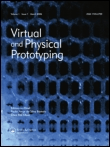
Virtual and Physical Prototyping
Scope & Guideline
Bridging Theory and Practice in Prototyping
Introduction
Aims and Scopes
- Additive Manufacturing Technologies:
Research on various additive manufacturing techniques, including powder bed fusion, material extrusion, and directed energy deposition, focusing on process optimization, material properties, and applications. - Material Science Innovations:
Studies that explore the development and characterization of new materials for additive manufacturing, including composites, high-entropy alloys, and biocompatible materials. - Integration of Machine Learning:
Application of machine learning and artificial intelligence techniques for process optimization, defect detection, and predictive modeling in additive manufacturing. - Bioprinting and Biomedical Applications:
Research dedicated to the use of additive manufacturing in biomedical fields, including tissue engineering, implant manufacturing, and drug delivery systems. - Sustainability and Eco-friendly Practices:
Focus on sustainable practices in additive manufacturing, including the use of recycled materials, energy-efficient processes, and the environmental impact of 3D printing technologies. - Advanced Simulation and Modelling Techniques:
Development of simulation tools and methodologies to predict the behavior of materials and structures during and after the additive manufacturing process.
Trending and Emerging
- 4D Printing Technologies:
Research on 4D printing, where printed materials can change properties over time, is gaining traction, particularly for applications in robotics and adaptive structures. - Smart Materials and Structures:
Emerging interest in the development of smart materials that can respond to environmental stimuli, enhancing functionality in applications ranging from biomedical devices to aerospace. - Digital Twin and Virtual Prototyping:
Increasing focus on the integration of digital twin technologies with additive manufacturing processes to enable real-time monitoring, predictive maintenance, and enhanced design capabilities. - Multi-Material and Composite Printing:
Growing research in multi-material additive manufacturing techniques that allow for the creation of complex structures with varied properties, suitable for specialized applications. - Sustainable Manufacturing Practices:
Emerging trends in research related to sustainability in additive manufacturing, including the use of biodegradable materials and methods to minimize waste and energy consumption. - Advanced Characterization Techniques:
A significant increase in studies utilizing advanced characterization methods, such as in-situ monitoring and high-resolution imaging, to better understand material behavior during the additive manufacturing process.
Declining or Waning
- Traditional Manufacturing Techniques:
Research specifically focused on conventional manufacturing processes (like machining and casting) has diminished, as the emphasis shifts towards additive manufacturing and hybrid processes. - Basic Theoretical Studies:
There is a noticeable decline in purely theoretical research without practical applications, as the journal increasingly favors studies that demonstrate real-world applications of additive manufacturing. - Generic Material Studies:
Research papers that explore generic materials without specific innovations or applications in additive manufacturing are becoming less frequent, with a preference for studies that highlight unique properties or novel materials. - Low-Impact Applications:
The focus on low-impact applications of additive manufacturing, such as hobbyist or craft projects, has waned in favor of more industrially relevant applications that provide significant technological advancements.
Similar Journals
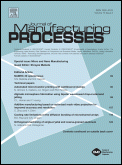
Journal of Manufacturing Processes
Shaping the Future of Manufacturing ProcessesThe Journal of Manufacturing Processes, published by Elsevier Science Ltd, serves as a premier platform for researchers, professionals, and students engaged in the fields of Industrial and Manufacturing Engineering as well as Management Science and Operations Research. With an impressive Q1 ranking across multiple categories for 2023, this journal not only showcases innovative research but also provides insights into strategic management and operational excellence within the manufacturing sector. Covering an extensive timeline from 1999 to 2024, the journal has solidified its position within the academic community, consistently ranking in the top percentile across various Scopus categories. Although it does not offer open access, the journal maintains a commitment to disseminating high-quality, peer-reviewed research that drives advancements in manufacturing processes. Located in the Netherlands, the journal aims to foster collaboration and knowledge sharing among scholars and industry experts alike, making it an indispensable resource for anyone dedicated to the advancement of manufacturing science.
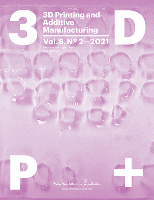
3D Printing and Additive Manufacturing
Redefining Manufacturing Through Innovation3D Printing and Additive Manufacturing, published by MARY ANN LIEBERT, INC, stands at the forefront of innovation in the realms of manufacturing and materials science. With an ISSN of 2329-7662 and E-ISSN 2329-7670, this journal provides a critical platform for researchers, professionals, and students to explore the latest advancements and applications of additive manufacturing technologies. Since its inception in 2014, the journal has rapidly gained recognition, currently holding a reputable Q2 classification in both Industrial and Manufacturing Engineering and Materials Science categories, as reflected in its 2023 Scopus Rankings. It is noted for its insightful peer-reviewed articles that cover a diverse range of topics including design methodologies, materials performance, and sustainability in 3D printing. Although not open access, the journal's readership is expanding, backed by its significant contributions to the field amidst evolving industrial landscapes.
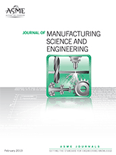
JOURNAL OF MANUFACTURING SCIENCE AND ENGINEERING-TRANSACTIONS OF THE ASME
Transforming Ideas into Engineering SolutionsJournal of Manufacturing Science and Engineering - Transactions of the ASME, published by the American Society of Mechanical Engineers (ASME), stands as a pivotal resource in the field of engineering, particularly focusing on manufacturing processes and systems. With a longstanding history since its inception in 1960, this esteemed journal boasts an impact factor that highlights its significant influence on research within several categories, including Q1 rankings in Industrial and Manufacturing Engineering and Mechanical Engineering, as well as Q2 rankings in Computer Science Applications and Control and Systems Engineering. Accessible in both print and online formats, the journal provides open access options to ensure that vital research is available to a broader audience. As it continues to forge new knowledge and innovative practices leading up to 2024, Journal of Manufacturing Science and Engineering remains integral for researchers, professionals, and students who are eager to contribute to and stay abreast of advancements in the manufacturing domain and related engineering fields.
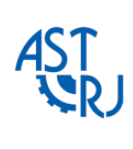
Advances in Science and Technology-Research Journal
Connecting Ideas, Advancing TechnologyAdvances in Science and Technology-Research Journal, published by Lublin University of Technology in Poland, is an esteemed open access journal that has been enriching the scholarly landscape since 2012. With an ISSN of 2080-4075 and an E-ISSN of 2299-8624, this journal is dedicated to disseminating cutting-edge research across Computer Science, Engineering, Environmental Science, and Materials Science. Recognized within the Q3 quartile in 2023 across various fields, it holds respectable rankings in Scopus, including Rank #184 in General Engineering and Rank #122 in Materials Science. The journal’s commitment to open access fosters wider dissemination and engagement within the scientific community, making it a vital resource for researchers, professionals, and students alike. As the fields of science and technology continue to evolve, this journal serves as a vital conduit for innovative ideas and collaborative research, inviting contributions that push the boundaries of knowledge.
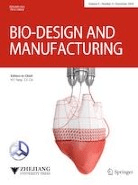
Bio-Design and Manufacturing
Merging Nature and Technology for a Better TomorrowBio-Design and Manufacturing, published by SPRINGER HEIDELBERG, is a pioneering journal that stands at the forefront of innovation in the fields of Biomedical Engineering, Biotechnology, Industrial and Manufacturing Engineering, and Materials Science. With its ISSN 2096-5524 and E-ISSN 2522-8552, this journal has established itself as a leading platform for disseminating cutting-edge research and advancements that merge biological principles with manufacturing processes, emphasizing sustainable and efficient practices. It has garnered recognition in the 2023 category quartiles, boasting a Q1 rank in all its relevant fields, which underscores its significance and impact—evident from its prime Scopus rankings that place it within the top percentiles of numerous engineering and materials science disciplines. Researchers, professionals, and students alike benefit from the wealth of knowledge presented in this journal, making it an essential resource for those seeking to enhance their understanding of bio-design applications and innovation in manufacturing processes.

JOHNS HOPKINS APL TECHNICAL DIGEST
Fostering Knowledge Exchange for Tomorrow's Technological ChallengesJohns Hopkins APL Technical Digest is a prominent journal published by the Johns Hopkins University Applied Physics Laboratory LLC, focusing on interdisciplinary research and advances in engineering and applied physics. With its inception in 1981, the journal serves as a platform for disseminating critical advancements in technology and applied sciences, appealing to researchers, professionals, and students alike. The journal is known for its rigorous peer-review process and commitment to quality, reflected in its Scopus rankings, which place it within the lower quartiles of both Engineering and Physics fields. Although currently not an Open Access publication, its valuable insights into the applications of physics and engineering continue to benefit the academic community. By fostering discussions and sharing innovations, the Johns Hopkins APL Technical Digest significantly contributes to the advancement of science and technology, making it a key resource for those in the field.
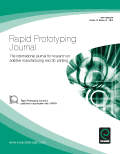
RAPID PROTOTYPING JOURNAL
Empowering Engineers through Cutting-Edge InsightsRAPID PROTOTYPING JOURNAL, published by Emerald Group Publishing Ltd, is a premier platform for advancing the field of rapid prototyping and related technologies. With an ISSN of 1355-2546 and an E-ISSN of 1758-7670, this vital journal has been serving the academic community since 1995 and will continue to deliver groundbreaking research through 2024. Recognized for its scholarly impact, it proudly holds a Q1 ranking in both Industrial and Manufacturing Engineering and Mechanical Engineering as of 2023, reflecting its commitment to quality and relevance in a rapidly evolving field. With Scopus rankings placing it in the top tier—#84 out of 672 in Mechanical Engineering and #59 out of 384 in Industrial and Manufacturing Engineering—this journal offers a rich repository of knowledge for researchers, professionals, and students alike. Though access is via subscription, the journal's rigorous peer-review process ensures that each published article contributes valuable insights into innovative methodologies, materials, and technologies shaping the future of manufacturing. As such, RAPID PROTOTYPING JOURNAL stands as an essential resource for anyone invested in the advancement of engineering and prototyping practices.

Journal of Manufacturing and Materials Processing
Catalyzing Collaboration in Manufacturing ScienceThe Journal of Manufacturing and Materials Processing is a premier *open access* journal published by MDPI since 2017, located in Switzerland. This scholarly publication provides a vital platform for sharing cutting-edge research in the fields of industrial and manufacturing engineering, mechanical engineering, and mechanics of materials. With an impressive categorization ranking in the Q2 quartile for these disciplines as of 2023, this journal not only enhances the global discourse in manufacturing and materials processing but also showcases significant contributions from researchers worldwide. Its robust positioning in Scopus rankings—placing 118th in Industrial and Manufacturing Engineering and 179th in Mechanical Engineering—underscores its impact and relevance in the academic community. As a *fully open access* journal, it ensures that all research is readily accessible, promoting greater dissemination of knowledge and fostering collaboration among scientists, engineers, and industry professionals. This makes the Journal of Manufacturing and Materials Processing an essential resource for anyone invested in the advancements of material technology and manufacturing processes.

MANUFACTURING ENGINEERING
Shaping the Landscape of Manufacturing KnowledgeManufacturing Engineering is a pivotal journal specializing in the fields of Industrial and Manufacturing Engineering, as well as Mechanical Engineering, with a rich history of publication since its inception in 1975. Published by the esteemed Société des Ingénieurs de Fabrication (SME), this journal plays a crucial role in disseminating innovative research, practical applications, and emerging technologies that shape the manufacturing sector. Despite its recent positioning in the Q4 quartile rankings on Scopus, the journal serves as a platform for rigorous peer-reviewed articles that contribute to the academic dialogue and bolster advancements in manufacturing practices. The journal operates without open access options, making it an essential resource for institutions and professionals looking to stay informed within the manufacturing domain. With a dedicated audience comprising researchers, engineers, and industry professionals, Manufacturing Engineering continues to address the evolving challenges and opportunities in manufacturing, fostering an environment ripe for collaboration and exploration.

International Journal of Precision Engineering and Manufacturing
Innovative Insights: Shaping the Future of Manufacturing ExcellenceInternational Journal of Precision Engineering and Manufacturing, published by the Korean Society of Precision Engineering, is a key academic platform dedicated to the advancement of research in the fields of precision engineering and manufacturing. With an ISSN of 2234-7593 and an E-ISSN of 2005-4602, this esteemed journal caters to a diverse readership, including researchers, industry professionals, and students, who are committed to exploring innovative solutions in Electrical and Electronic Engineering, Industrial and Manufacturing Engineering, and Mechanical Engineering. Operating from South Korea, the journal has attained a commendable Q2 ranking in several engineering categories as of 2023, reflecting its influence and relevance in the academic community. Though it is not an open access journal, the International Journal of Precision Engineering and Manufacturing provides vital insights and updates in precision technology, bridging the gap between theory and practice. Researchers are encouraged to contribute to this evolving field and engage with high-quality studies that drive progress and innovation.